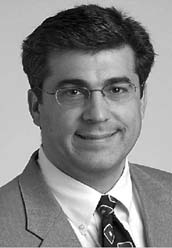Of patients who are hospitalized in this country, between 1 and 2% of them will suffer some sort of negligent injury, according to a Harvard study. Only about 2% of those, in turn, will result in a malpractice claim. Even though those percentages are small, based on the sheer volume of patients, they add up to large numbers of malpractice suits brought against physicians every year. But are these always cases of negligence, or are they sometimes just avoidable bad outcomes?
A panel of experts convened at the 2006 Combined Otolaryngology Spring Meeting (COSM) in Chicago to look at some specific cases and try to inject a little bit of black and white into the sometimes gray area of negligence, malpractice, and bad outcome.
The panel included David W. Kennedy, MD, who served as moderator of the discussion; James A. Stankiewicz, MD; Donald C. Lanza, MD; Rodney P. Lusk, MD; Douglas E. Mattox, MD; Andrew N. Goldberg, MD; and special guest Patricia J. Foltz, JD, a malpractice defense lawyer from Chicago.
CASE #1
Healthy middle-aged female. Over several years, she has had multiple right-side polypectomies performed in-office. One year ago, she had in-hospital right-side polypectomy and right-sided functional endoscopic sinus surgery (FESS). Postoperative pathology showed previously unsuspected inverted papilloma. Patient subsequently had a right lateral rhinotomy and then was referred to a specialist for persistent disease four months after the lateral rhinotomy. The patient now has a tumor on the skull base.
Should this have been detected sooner, and what is the standard of care for submitting pathology in office polypectomy?
Dr. Mattox: Even if it’s in-office, I think tissue removed should be submitted for pathology.
Dr. Lanza: I agree. I had an occasion once where I was convinced that a patient who had no history of vocal polypectomies elsewhere and polyps were normal. I almost thought not to send the tissue. The day after Christmas that pathology came back malignant melanoma.
Dr. Stankiewicz: If you know a patient-you have operated on that patient and you know the diseases they’ve had. If they come in with an obstructive polyp and it looks typically like what you’ve seen in the past, I think it’s okay to remove that and not send it to pathology. But if you don’t know the patient or are operating on them for the first time, then you should absolutely send it to path.


Leave a Reply